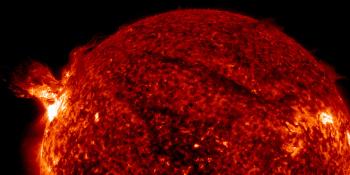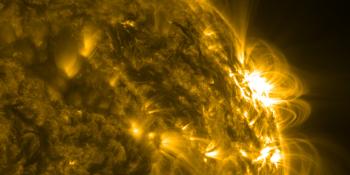Kp-index Help
NOAA SWPC Planetary K-index
This is the planetary K-index from the NOAA SWPC. This is a preliminary Kp-index that is updated every minute by the NOAA SWPC with an estimate of the measured Kp of the past 3 hours based on eight ground-based magnetometers around the world. This estimated 3-hour planetary Kp-index consists of 10 values and ranges from 0 to 9. It is important to understand that this Kp-index isn't a forecast or an indicator of the current conditions, it always shows the Kp-value that was observed during a certain period.
All times in UTC
GFZ Potsdam Quicklook Kp-index
This is the Quicklook Kp-index from the GFZ German Research Centre for Geosciences. This is a preliminary Kp-index which estimates the Kp-index in 3-hour periods. It is expressed in a scale of thirds and has 28 values.
All times in UTC
GFZ Potsdam Quicklook Hp-index
This is the Quicklook Hp-index from the GFZ German Research Centre for Geosciences. The geomagnetic Hpo index is a Kp-like index with a time resolution of half an hour, called Hp30. Besides that the Hpo index is not capped at 9 like Kp, but is an open ended index that describes the strongest geomagnetic storms more nuanced than the three-hourly Kp, which is limited to the maximum of 9.
GFZ Potsdam Quicklook Geomagnetic ap-index
The ap index is a 3-hourly "equivalent amplitude" index expressing the range of disturbance in the horizontal components and is directly related to the Kp index. Each day the Ap index will be determined by averaging the eight values of ap for each day. The A-index was invented because there was a need to derive some kind of daily average level for geomagnetic activity. Because of the non-linear relationship of the K-scale to magnetometer fluctuations, it is not meaningful to take averages of a set of K indices
All times in UTC
Latest news
Latest forum messages
Support SpaceWeatherLive.com!
A lot of people come to SpaceWeatherLive to follow the Solar activity or if there is a chance to see the aurora, but with more traffic comes higher costs to keep the servers online. If you like SpaceWeatherLive and want to support the project you can choose a subscription for an ad-free site or consider a donation. With your help we can keep SpaceWeatherLive online!
Space weather facts
| Last X-flare | 2025/12/08 | X1.1 |
| Last M-flare | 2025/12/20 | M1.0 |
| Last geomagnetic storm | 2025/12/12 | Kp5 (G1) |
| Spotless days | |
|---|---|
| Last spotless day | 2022/06/08 |
| Monthly mean Sunspot Number | |
|---|---|
| November 2025 | 91.8 -22.8 |
| December 2025 | 120.8 +29 |
| Last 30 days | 108.7 +19.4 |





